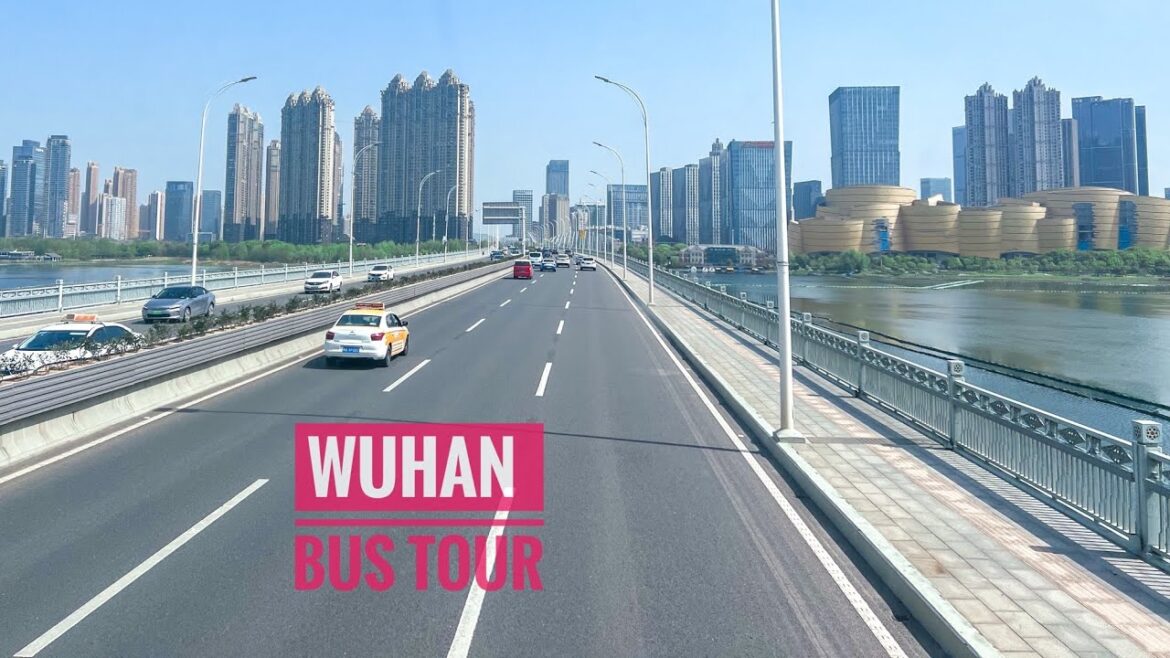Wuhan is located in central China at the confluence of the Yangtze and Han rivers. Benefiting from convenient waterway transportation, Wuhan has historically been a prosperous trading port and regional hub, divided into three districts: Wuchang, Hankou, and Hanyang. However, on the other hand, Wuhan has also been hit hard by severe floods multiple times.
Many significant historical events have taken place in Wuhan, the most famous of which is the Wuchang Uprising in 1911. This uprising ended the 2000-year imperial rule and brought profound changes to China’s political situation. The starting point of this video is the square commemorating the Wuchang Uprising (please watch another video for a different bus route in Wuhan). Wuhan also briefly served as the capital of China. In 1937, this city was the wartime capital of China for ten months.
Today, Wuhan is a “university city” with 94 higher education institutions and a total of over one million university students. Wuhan is hot and humid in the summer and is one of the four major “furnace” cities in China. It has passionate citizens and a rich breakfast culture, and famous local cuisine includes Wuhan hot-dry noodles and tofu skin.
00:45 – Shouyi Square, commemorating the Wuchang Uprising. The Wuchang Uprising marked the end of China’s 2000-year-old feudal imperial system and propelled a change in China’s political situation.
03:37 – Wuhan Conservatory of Music area. Many musical instrument shops can be found in the surrounding area.
05:14 – Linjiang(Riverside) Avenue. The left side of the road is the river embankment, and beyond that is the Yangtze River. There are several docks along the way.
06:31 – Wuhan Yangtze River Bridge. It is the first bridge built over the Yangtze River (please watch another video for this bridge).
09:12 – Entrance to Wuchang Riverside (on the left side of the road).
17:22 – Sha Lake Bridge and Sha Lake. Wuhan has approximately 166 lakes, with a total water surface area of 2117.6 square kilometers, accounting for about 1/4 of the city’s total area. Among them, Tangxun Lake is the largest urban lake in China and also the largest urban lake in Asia.
20:28 – On the right side of the road is the waterway connecting Sha Lake and Shuiguo Lake, and on the other side of the waterway is Han Street pedestrian street.
24:20 – On the left side of the road is Shuiguo Lake, and on the right side is East Lake.
26:14 – Wuhan Second Ring Road.
29:04 – Hubei Provincial Museum (the entrance gate is on the far right of the screen). The most famous cultural relics in the museum’s collection are the Sword of Goujian, King of Yue (771-476 BC), and the chime bells.
29:13 – Hubei Museum of Art.
33:01 – Entrance to East Lake Scenic Area, which includes the following scenic spots:
Greenway: a 40-kilometer-long bike and walking path around Donghu Lake. Cherry Blossom Garden: covering an area of 260 acres, with 10,000 cherry blossom trees. The first batch of cherry blossom trees planted in the garden was gifted by former Japanese Prime Minister Tanaka Kakuei to Deng Yingchao, who then gave them to Donghu Lake. The majority of cherry blossoms were jointly planted by China and Japan in 1998. It’s known as one of the three major cherry blossom cities in the world, along with Hirosaki Cherry Blossom Festival in Japan’s Aomori Prefecture and the Cherry Blossom Festival in Washington State, USA. Ocean World, Wuhan Botanical Garden, and more.
Location: https://goo.gl/maps/wiEj9y8HVnZxRz6e9
Filmed 7th April, 2023
Filmed Using DJI Pocket 2

